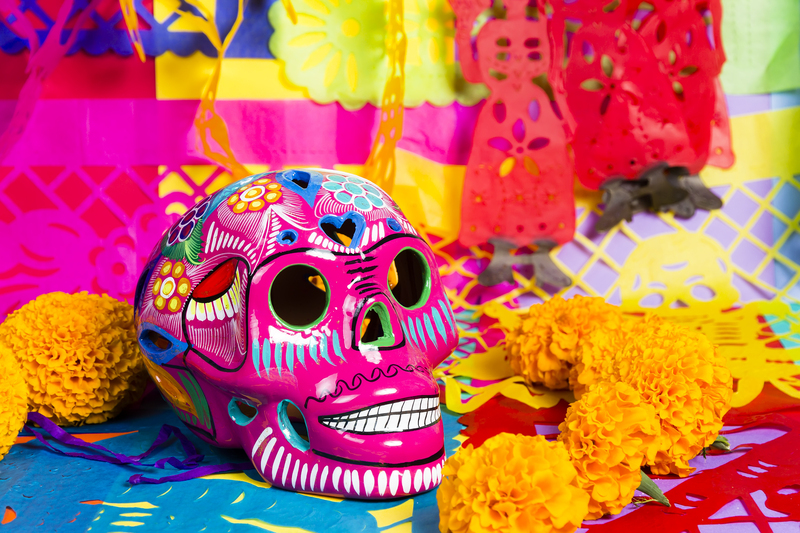Unlocking the hidden history behind the beloved tulip
Posted on 13/08/2025
Unlocking the Hidden History Behind the Beloved Tulip
The tulip--with its stunning array of colors and elegant, cup-shaped blossom--has captured the imagination of people worldwide for centuries. Often associated with springtime, love, and beauty, the tulip flower possesses a fascinating and multi-layered history that extends far beyond mere decoration. In this comprehensive article, we delve into the hidden history behind the beloved tulip, revealing its journey across continents, its economic and cultural impacts, and the enduring allure that makes it one of the world's most cherished blooms.

Origins of the Tulip: From the Wilds of Central Asia
The story of the tulip's history begins not in the famed Dutch fields, but in the rugged mountains and steppes of Central Asia. Tulipa species, belonging to the family Liliaceae, first emerged thousands of years ago in regions that are today parts of Kazakhstan, Uzbekistan, Kyrgyzstan, and the Tien Shan range.
These early tulips were wildflowers, thriving in harsh, arid conditions, their vibrant petals a sharp contrast to their tough environment. Over centuries, these wild tulips slowly spread to Persia (modern-day Iran), Turkey, and eventually westward into Europe. Each step of this journey enriched the tulip's story, embedding it deeper in the history and culture of the regions it touched.
The Persian and Ottoman Fascination
By the 10th century, Persian poets and artists had begun to mention tulips, using them as symbols of love and beauty in their literature and decorative arts. The flower's shape even inspired motifs in carpets, textiles, and architecture across ancient Persia.
However, it was in the Ottoman Empire where the tulip achieved legendary status. The word "tulip" itself is believed to have derived from the Persian word delband, meaning "turban", an allusion to the flower's turban-like shape. Tulips became a symbol of power, wealth, and nobility. By the 16th century, Ottoman sultans cultivated thousands of tulip varieties in their palace gardens. The Tulip Era (1718-1730), a period of peace and prosperity, saw the flower celebrated in art, literature, and lavish festivals, even gracing the intricate tiles of the Sultan Ahmed Mosque (the Blue Mosque) in Istanbul.
Tulips Take Europe by Storm: The Dutch Obsession
It was the introduction of tulips to Europe in the late 16th century that set the stage for their most dramatic and storied chapter. European botanists and collectors, captivated by the exotic beauty of tulips, began to amass the rare bulbs. In 1593, Flemish botanist Carolus Clusius planted tulip bulbs in the Leiden University botanical gardens, sparking widespread horticultural excitement in the Netherlands.
- The flower's vibrant coloration, at the time unmatched by other European blooms, spurred a floral frenzy.
- Trading networks developed rapidly around tulip bulbs.
- The demand for new and unique varieties fueled an increasingly lucrative--and risky--market.
The Tulip Mania: A Blossoming Financial Phenomenon
Tulip Mania remains one of the most remarkable--and cautionary--economic tales in history. Between 1634 and 1637, the Dutch experienced a speculative bubble of unprecedented scale centered entirely on tulip bulbs. Prices for rare varieties soared to astonishing heights, sometimes exceeding the value of a house or a year's wages for a skilled artisan.
People from all walks of life joined the mania. Farmers, merchants, and aristocrats speculated feverishly, often trading bulbs before they had even been harvested--a precursor to modern futures markets. When the bubble burst in 1637, prices crashed, leaving many financially ruined and providing a longstanding metaphor for economic excess and folly.
- Tulip varieties like the Semper Augustus gained legendary status for their rareness and price tags.
- The phenomenon demonstrated the first recorded speculative bubble in economic history.
- Despite the crash, tulip popularity never waned in the Netherlands.
The Evolution of Tulip Cultivation and Specialization
Following Tulip Mania, the Dutch developed a systematic, scientific approach to tulip breeding and bulb cultivation. The Netherlands soon became the undisputed global center for tulip horticulture.
Innovation and Breeding
Artisan growers refined techniques to create new hybrids, producing tulips that boasted striking patterns--so-called "broken" colors caused at first by virus infections, which are now replicated in a controlled manner. Today, more than 3,000 tulip varieties are officially registered, in almost every imaginable hue and form.
- The Keukenhof Gardens in Lisse, Netherlands, display over seven million tulips each spring, attracting tourists from around the world.
- The Dutch export billions of tulip bulbs annually, making them an economic powerhouse in the flower industry.
Modern horticultural technology has allowed tulip bulbs to be cultivated in diverse climates, spreading their beauty--and history--across the globe. The Netherlands supplies the majority of the world's commercial tulip bulbs, ensuring that the flower's European epicenter continues to define the global tulip trade.
Tulips in Art, Culture, and Symbolism
The tulip's vivid beauty and complex past have inspired generations of artists, writers, and designers:
- Art: The flower appears in Dutch Golden Age paintings, Ottoman miniature illustrations, and Persian poetry, encapsulating ideals of love, perfection, and the fleeting nature of life.
- Literature: Poets from Omar Khayyam to contemporary authors have used the tulip as a metaphor for beauty and transience.
- Architecture: Tulip motifs adorn Islamic tiles, European textiles, and Turkish ceramics, reflecting their cross-cultural journey.
The Meanings of Tulip Colors
- Red tulips: Symbolize undying love and passion.
- Yellow tulips: Represent cheerfulness, hope, and friendship.
- White tulips: Associated with forgiveness, purity, and respect.
- Purple tulips: Linked to royalty, luxury, and nobility.
- Variegated or "broken" tulips: Once symbolized exclusivity and high status in Dutch society.
In contemporary times, the tulip is celebrated during spring festivals across the world, from Canada's capital Ottawa--where the Dutch Royal Family sent thousands of bulbs as a thank-you after WWII--to Istanbul's annual Tulip Festival, which honors the flower's earliest home.
The Tulip as a Symbol of National Identity
While the tulip is symonymous with Dutch culture, its deeper meaning resonates in Turkey, Iran, Central Asia, and beyond. Each region infuses the tulip with local significance:
- Turkey: The tulip remains a national symbol, appearing on coins, official emblems, and in public art across Istanbul.
- Iran: Tulips are prominent in poetic symbolism, and the red tulip is a mark of martyrdom and sacrifice.
- Kazakhstan and Central Asia: Wild tulip species remain a source of national pride, featured in art and public celebrations.
The cross-cultural journey of the tulip--from wildflower to royal treasure to a fixture in gardens and homes--reflects the ways in which a single flower can unite disparate peoples and histories.

Tulip Care and Cultivation: Embracing a Living Legacy
Part of the tulip's global appeal lies in its accessibility. Today, amateur gardeners and professionals alike grow tulips for their fleeting yet breathtaking beauty. To successfully cultivate tulips and thus connect with their fascinating heritage, consider the following tips:
Key Growing Tips for Tulip Enthusiasts
- Choose quality bulbs: Select disease-free, plump bulbs from reputable sources, ideally those certified by official Dutch or local growers.
- Plant in autumn: In most climates, tulip bulbs should be planted several weeks before the ground freezes.
- Well-drained soil: Tulips thrive in loose, nutrient-rich, and well-drained soil to prevent bulb rot.
- Adequate sunlight: While tolerant of some shade, tulips bloom best with full or partial sun exposure.
- Post-bloom care: After flowers fade, let foliage yellow naturally before removing it--this process nourishes the bulb for next year's bloom.
With just minimal care, a handful of tulip bulbs can grace your garden with the same vibrant colors that once captivated sultans and sparked international frenzies.
The Fascination Endures: Why the Tulip Remains a Global Icon
Today, the tulip's symbolism, beauty, and economic importance endure as powerfully as ever. Whether adorning city parks in Amsterdam, wild meadows in Kyrgyzstan, or home gardens in North America, the tulip's journey is a reminder of nature's ability to inspire across boundaries. Its role in global trade, economics, horticulture, and art makes the tulip not just a flower, but a living link to centuries of shared human history.
Conclusion: Unlocking the Timeless Legacy of the Tulip
Understanding the hidden history of the tulip unveils a tapestry of stories--of migration, economic daring, artistic inspiration, and enduring cultural love. From the slopes of Central Asia to the manicured fields of Holland, the beloved tulip's legacy is as colorful and complex as its petals. For anyone who cherishes beauty with depth, the tulip is truly a flower worth celebrating--and understanding.
Next time you admire a tulip in bloom, remember: you are witnessing a living chapter in an epic story that continues to unfold, one petal at a time.
Latest Posts
What Makes [AREA] Flowers Unique? Local Varieties & Favourites
Understanding Peony Flowers: Symbolism and the Power of Colors
Why Red Roses are a Valentine's Day Favorite






